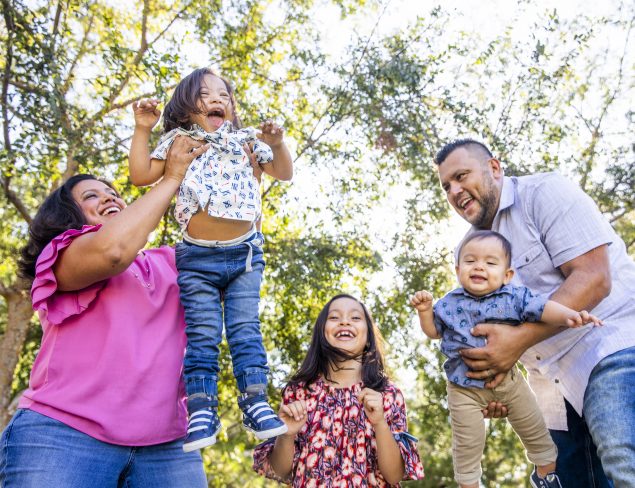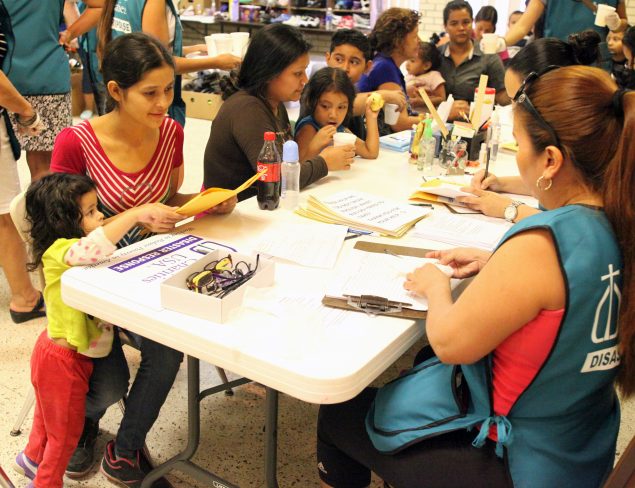
Emerging Bilingual Learners
Without an intentional focus on children of color, dual language learners, and children from families with economic and food insecurity—the US will continue to serve its young children and their families poorly and create grave consequences for democracy and economic growth.

In the United States, more than one in five people are bilingual.
The population of young emerging bilingual learners is growing rapidly; immigrant children are the fastest growing segment of the US population. More than one in three young learners lives in a family in which the home language is something other than English.
Leaders in the early care and education field recognize that the rebuilding of early education must be more equitable and more responsive to young children’s and families’ needs. Now is an ideal time to see where better design is already in place for emerging bilingual learners and to highlight these bright spots as others begin to change their systems.
In the US, bilingualism often is not viewed as an asset until you enter the workplace. During school years, status as a dual language learner is considered to place a child “at risk,” despite clear research that young children are fully capable of developing and acquiring more than one language if the adults who care for them are able to support both. Our nation’s early learning and K-12 systems often struggle to effectively educate these children. But there are bright spots—including people, places, policies, programs, and practices—that are improving the quality of early learning for bilingual learners and helping them achieve their full potential. BUILD is working to identify and highlight these bright spots.
This work is timely for a number of reasons. The COVID-19 pandemic, in addition to causing a devastating loss of human life, is wreaking havoc on the economy and state budgets. State-funded quality improvements that were on the horizon just last year now seem out of sight. The pandemic has laid bare the racial, ethnic, and economic fault lines of our child- and family-serving systems. George Floyd’s murder at the hands of police tapped a long-growing awareness—including among White people—of the racism and inequities in our society.

Emerging Bilingual Learners Project Goals
BUILD improves the quality of early learning support for emerging bilingual learners so they can achieve the long-term benefits of bilingualism by:
- Scanning the early care and education landscape for bright spots where the needs of dual language learners are incorporated into Quality Rating and Improvement Systems (QRIS) and quality improvement work in early care and education systems more broadly across the country.
- Gathering foundational information to fuel larger conversations and future work to support emerging bilingual learners.
Our Work
BUILD is working to support state actions to better serve young bilingual learners and help them reach their full potential by:
- Identifying, through a literature review and key informant interviews, promising practices and ideas that can be shared with others to improve how state’s early care and education systems support emerging bilingual learners, their families, and the providers who care for them.
- Creating and supporting an advisory group committed to improving early learning for emerging bilingual learners and will provide feedback on the project design, suggestions for interviewees, and other guidance.
- Seeking examples of approaches states and communities have used to build the specific capacity of professional development and higher education systems that strengthen the next generation of educators to better support emerging bilingual learners.
- Examining systems that support formal and home-based child care. Family child care and family, friend, and neighbor care are particularly well-positioned to support strong home-language modeling and identify development. These forms of home-based care are the types of child care most used by families seeking linguistic and cultural practices that reflect their own.
- Uncovering examples of how libraries, museums, and other community anchor organizations have been harnessed to support emerging bilingual learners.
This project will result in a collection of promising approaches states and communities have been taking to improve policy, practices, and systems building in support of emerging bilingual learners.
By widely disseminating our learnings, BUILD hopes to be a catalyst for states to embrace these approaches as they rebuild their early learning systems post-COVID-19 with a stronger emphasis on equity and a heightened focus on children of color, dual language learners, and children from families with economic and food insecurity.
Resources:
Click here for the Emerging Bilingual Learner Resource Collection.
